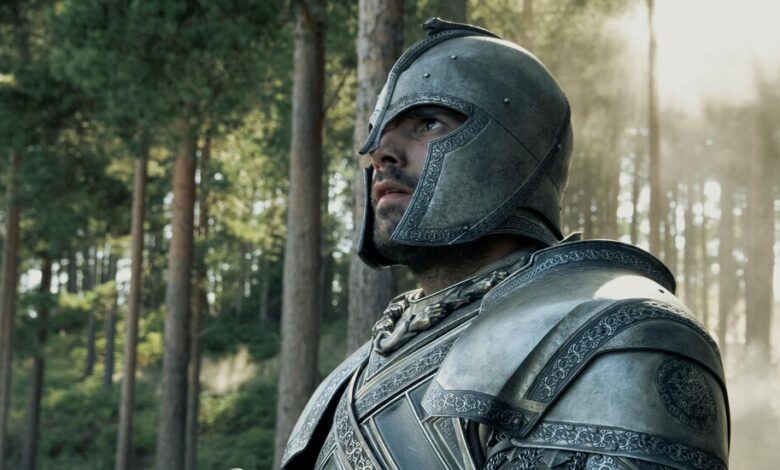‘House of the Dragon’ Season 2, Episode 4: Fire in the Sky

The same probably can’t be said for Daemon, who spends this episode battling hallucinations caused by either the Harrenhal curse or the magic of Alys Rivers, the witch who lives there. His sojourn in those dank, crumbling corridors is deliciously gothic and full of nods to other genre milestones. In his visions, Daemon follows a doppelganger of himself and decapitates a young Rhaenyra, just as Luke Skywalker decapitated Darth Vader only to see his own face in “The Empire Strikes Back.” He sees himself with bloody hands like Lady Macbeth. He starts by seeing a black goat, which could easily be a cameo Black Phillip from Robert Eggers’ horror film “The Witch.” This is not the kind of steady mind you want at the head of your army.
Nor would Aemond or Criston, the bloodthirsty leaders of the Greens, or Aegon, who merely seeks to overtake his brother and his Hand, have hesitated to burn their rivals. For all their faults, the Black and Green Queens are the Seven Kingdoms’ best bulwarks against total slaughter.
At least, they were, until now. Alicent may have realized that her late husband, Viserys, didn’t really intend for their son Aegon to ascend the Iron Throne. But she’s also realized that it doesn’t matter. “The meaning of Viserys’ intentions died with him,” she tells Larys the Clubfoot, her son’s newly appointed Master of Whisperers. “Yes, it did,” he agrees. As another HBO show once put it: “If it’s a lie, then we’ll fight on that lie. But we have to fight.”
Rhaenyra, for her part, realizes that Alicent can no longer be reasoned with. Her decision to go straight to battle shocks her council members, who had largely mistaken her grace or her gender for weakness. She assures them that she was merely trying to ensure that there was no other way before she unleashed dragonfire.
This installment feels like America’s answer to last year’s masterfully melancholic, moving monster movie, “Godzilla Minus One,” the first Godzilla film to win an Oscar (for best visual effects). Director Takashi Yamazaki, who also wrote and oversaw the visual effects, followed in the footsteps of Ishiro Honda’s original “Godzilla” (1954) and Hideaki Anno’s nightmarish “Shin Godzilla” (2016) by depicting the King of the Monsters as a walking, radioactive, primal scream — against war, against cruelty, against stupidity, against civilization’s relentless assault on the people who make it up. The death of the dragons is a stand-in for our own burning world.




